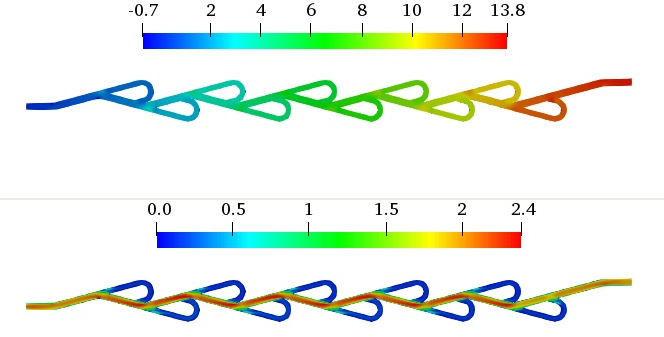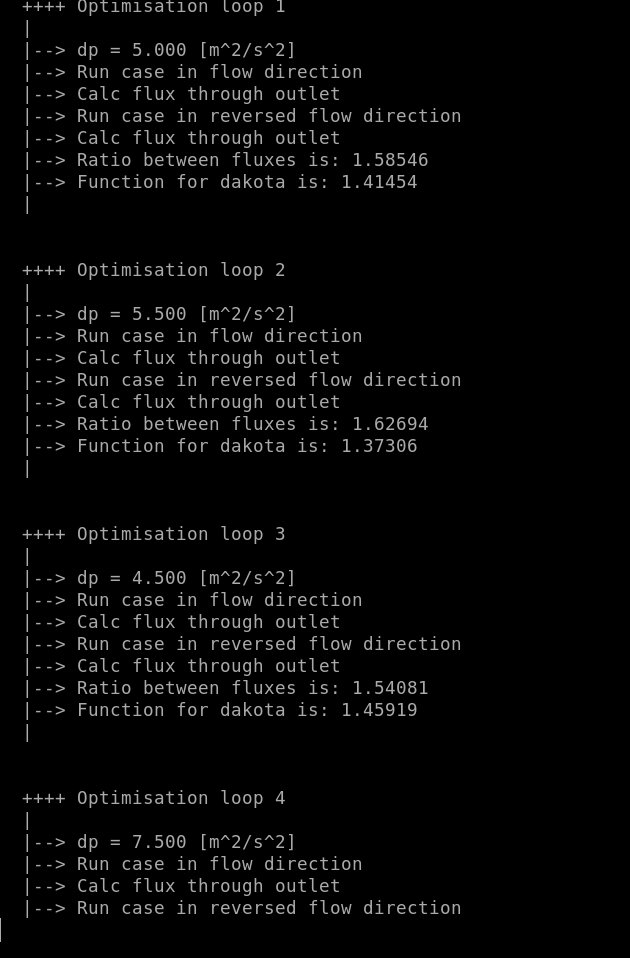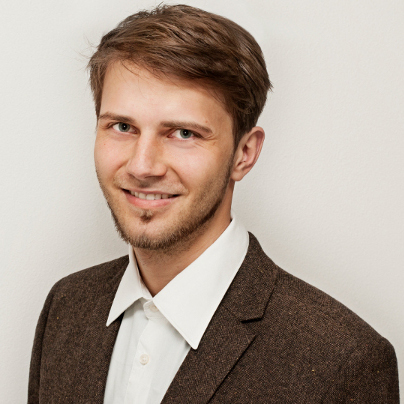Tesla's One-Way-Valve
DAKOTA® coupling, optimization, simpleFoam, steady-state, function objects
The coupling of DAKOTA® and OpenFOAM® is a common strategy if optimization tasks have to be performed automatically. However, most engineers do not use optimization toolboxes, and test cases that demonstrates the coupling are rarely documented or out of date. This case demonstrates how to set-up the interface for DAKOTA®. As always, the well-structured and commented run script from Tobias is used to give all essential information about the operations. The case itself models the Tesla's One-Way-Valve. Here, the channels are designed in a way that the flow can pass easily in operation direction, while the reverse flow will reduce the mass flux based on the geometrical design. The task for the optimizer is to find the pressure drop in which the reverse flow has three times less mass flux than the »opened« direction.
Note: The results between the Foundation and ESI-OpenCFD versions differ due to differences in the mesh representation. I was not able to generate the same mesh for the ESI-OpenCFD version. Furthermore, v9 and v2112 are corrected in terms of flux calculation


Published under the GNU General Public License 3
Over the last ten years, Tobias tried to publish a wide range of different materials related to OpenFOAM® and CFD. You know it much better than he does if the content is worth to be supported. If you want to thank Tobias for the work he did, feel free to tell the community your opinion about the work Tobias Holzmann is doing or you can email your thoughts directly to »
Support the work of Tobias Holzmann
The available OpenFOAM® training cases are tested and built for different OpenFOAM® versions (not distributions) on a Linux machine. During the tests, only the OpenFOAM Foundation version of OpenFOAM® was used. Furthermore, the following software packages are required for most of the training cases: Salome®, ParaView®, and for optimization tasks, one also needs the open-source software DAKOTA®. The OpenFOAM® cases might work with the ESI version of OpenFOAM® but it is not supported. For the OpenFOAM® extend project, the training cases will probably not work as the code diverged too much. Additionally, there is no support for Windows-based and MAC-based OpenFOAM® versions.
This offering is not approved or endorsed by OpenCFD Limited, producer and distributor of the OpenFOAM software via www.openfoam.com, and owner of the OPENFOAM® and OpenCFD® trade marks
Share the work on Your social network
Tobias would be grateful if you share his work on your social network in order to keep the OpenFOAM® community up to date. Furthermore, sharing the work will avoid that people investigate into topics, that are already prepared for your study such as the examples provided by Tobias Holzmann.


